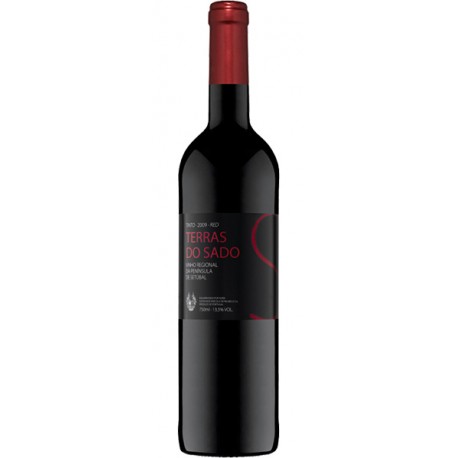 View larger
View larger
Red wine Terras do Sado Tinto
SV00718
New product
Setubal Peninsula Regional red wine with ruby color with violet rim, red fruit aroma such as strawberries. Young, soft and balanced in the mouth.
Enjoy it at 16 º C maximum, with all kind of meats and codfish dishes.
Available in 0.75 L bottle, 0.375 L bottle and BIB 3 L
Data sheet
| Export Box: | 6 bottles with 75cl |
| Euro Pallet | 100 boxes |
More info
Regional Peninsula de Setubal red wine
Varieties: Castelao, Trincadeira, Aragones, Alfrocheiro and Cabernet Sauvignon
Soil/Terroir: Sandy
Average Age of Vines: 10 years
Media Production: 15 hl/ha
WINEMAKING: Alcoholic fermentation in stainless steel vats at control temperature followed by long pelicular maceration
AGEING: No ageing
ANALYSIS
Alcohol content: 14 % VOL
Total acidity: 4.8 g/l
Residual sugar: <2 g/l
Dry Extract: 210 gr/l
pH: 3.7
SERVING SUGGESTIONS: Enjoy at 16 º C maximum, with all kind of meats and codfish dishes
Organoleptic Characterization
Visual Appearance: Ruby color with violet rim.
Appearance olfactory: Red fruit aroma such as strawberries.
Appearance taste: Young, soft and balanced in the mouth.
Enologist recommendations: Ideal as accompaniment of red meat, of pork meat, of seasoned meat, of dishes of game, of fish in the oven including cod
Awards:
- Gold Medal Concours Mondial Bruxelles 2015
- Best Buy Revista de Vinhos
- Gold Concurso de Vinhos Península de Setúbal
- Wines under 2€ Deco Proteste
The Grapes
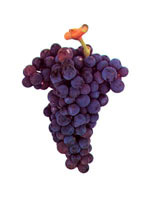 Castelao
Castelao
Castelao is one of the grape varieties most cultivated in the south of Portugal, particularly in the area of Setubal Peninsula.
It has had many names throughout times: Joao de Santarem, Castelao Frances and the popularly spread Periquita.
Castelao develops best in hot climates and sandy and dry soils.
Castelao is very well-adapted to the Setubal Peninsula and it is here where it manifests itself in all its fullness, especially within the sandy soils and old vineyards of the region, producing wines that are more structured, fleshy and intense.
The wines made with Castelao present strong, fruity aromas of cherry, currant, blackberry, raspberry and candied plum, as well as some nutty notes, which harmonize well with an aging stage in oak barrels.
In general, Castelao wines exhibit excellent aging ability.
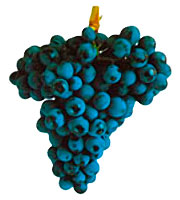 Trincadeira
Trincadeira
Rich in colour, with good acidity and rarely an excess of alcohol, Trincadeira (as it's known in the Alentejo) or Tinta Amarela (if you are speaking to a Douro producer) makes wines of serious quality when ripe, but it does not always achieve ripeness.
Properly ripened, it has vibrant raspberry fruit tempered by herby, peppery, spicy, floral complexity, and it can age well.
Under-ripe, it tastes herbaceous. It is a difficult vine to grow, producing exuberant amounts of foliage and needing constant trimming to prevent those vegetal flavours.
Yields are generally high, but unreliable.
It is very sensitive to rot and other vineyard diseases. For this reason it does better in hot, dry places, and is therefore particularly at home in the Alentejo and Ribatejo/Tejo areas (is very well-adapted to the Setubal Peninsula): these are the regions where it really shines. But it is grown throughout Portugal.
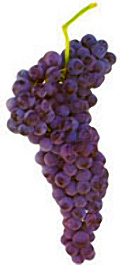 Aragones
Aragones
One of the noblest grape varietals of the Iberian Peninsula, Aragones is renowned on both sides of the border, recognized as Tempranillo in Spain, and in Portugal as both Aragones and Tinta Roriz in the north.
It is an early maturing variety, vigorous and productive, and easily adapting to different climates and soils but it prefers hot, dry climates with sandy or clay-limestone soils best.
In the Setubal Peninsula it occupies about two-hundred and seventy hectares and its maturation occurs, as a general rule, one week before the Castelao grape varietal.
If its force is controlled, it produces full-bodied wines that are very elegant and aromatic.
The aromas of this varietal exude plum, dried plum, red berries, spices and sometimes licorice, becoming more complex as it evolves.
Although Aragones is often used in blends to harmonize with other varieties like Castelao, Touriga Nacional, Trincadeira, Touriga Franca and Alicante Bouschet, it's also produced as a single-varietal wine, which has been met with great success and has become a hallmark for some of the producers in the region.
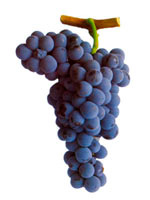 Alfrocheiro
Alfrocheiro
This is a Dão grape by origin, but it has spread successfully southwards into the Alentejo, Ribatejo/Tejo and Palmela regions because of its ability to retain good acidity even in hot climates.
The wines are rich in color with firm but ripe tannins and a good balance of tannins, alcohol, acidity and attractive, berry fruit, reminiscent in particular of blackberries and ripe stawberries.
The vines are vigorous, requiring more attention than many other varieties to keep the vegetation under control, and they are prone to attack by oidium and botrytis.
 Cabernet Sauvignon
Cabernet Sauvignon
Cabernet Sauvignon is the most international of all French grape varieties, being widely grown across all five continents.
It has found a special niche and style in the Peninsula de Setubal, one of the few Portuguese winegrowing regions where it can ripen to perfection.
Cabernet Sauvignon is one of those varieties that can be termed "enriching"; deeply colored and thick-skinned, it can spice up blends, imbuing body and consistency to well-composed, perfumed, fruity and spicy wines.
Appreciated for its versatility, resistance and correctness it yields wines of immense longevity that age with elegance and security.
The Region
The Setubal Peninsula is a unique region, whose wines are as generous and balanced as the region that sees them born.
Mother Nature was magnanimous and refined: from with the two peninsulas, “drawn” by the two largest estuaries in Portugal, was born a region rich in biodiversity and fish and shellfish with both natural and protected areas.
The framing by the Atlantic Ocean and the Tagus and Sado River estuaries, combined with a deep Mediterranean influence and geological formation provide a unique set of characteristics for wine production.
The Setubal Peninsula also has one of the oldest denominations in Portugal - the region of Moscatel de Setubal, whose demarcation was begun in 1907 and completed and confirmed in 1908.
The Setubal DO (Denomination of Origin) region is geographically bounded by the municipalities of Setubal, Palmela, Montijo and the village of Castelo in the municipality of Sesimbra.
This "terroir", which is the cradle of the Moscatel de Setubal is unique: the joint annual rainfall of 550-750 milliliters and the 2,200 hours of sunshine poured over the sandy and clay – limestone soils is all seasoned with a handful of Atlantic breeze.





